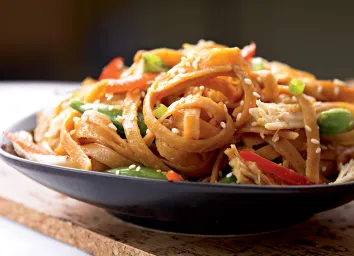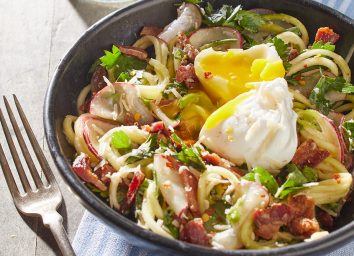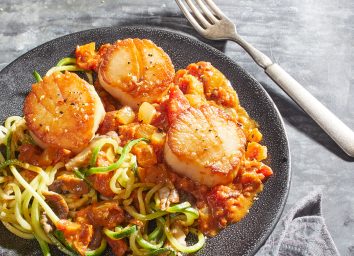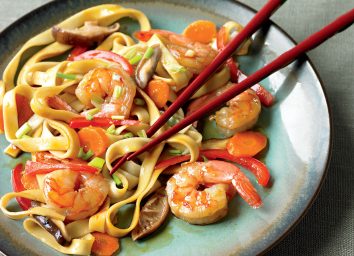Chow Mein vs. Lo Mein: What's the Real Difference Between Them?
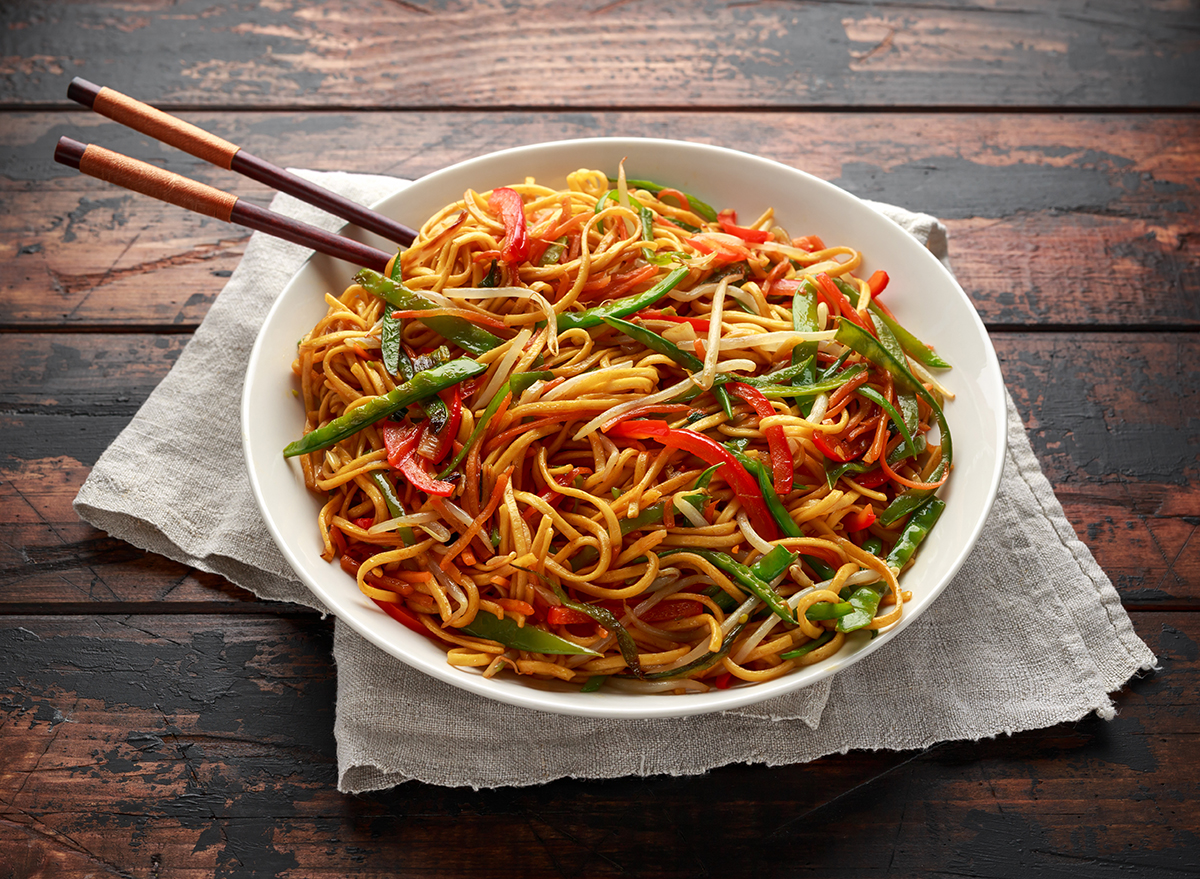
When you're ordering takeout, do you ever confuse chow mein for lo mein? You might just read the word mein (which means noodles) and think that they're the same dish. This mixup is similar to confusing ravioli with tortellini—both are types of Italian pasta, but as you know, they are not one and the same. Similarly, chow mein and lo mein are both noodles, but they're cooked very differently.
In light of this chow mein vs. lo mein debate, we wanted to explain the differences between the two types of noodles so you never confuse them again and actually order the dish you wanted in the first place.
So chow mein vs. lo mein—what's the difference?
What is chow mein exactly? Chow mein, in English, means fried noodles, whereas lo mein translates to stirred or tossed noodles. So essentially, it's the way the noodles are prepared that makes them different, as the noodles in both dishes are made from wheat flour and eggs, which is similar to the ingredients of Italian pasta.
How do you prepare chow mein?
To prepare chow mein, you have to boil the noodles first and then fry them before adding vegetables such as sliced bell pepper and bean sprouts, and meat into the skillet. The fried noodles are then doused in a thicker, darker sauce that combines ingredients such as soy sauce, broth, oyster sauce, sesame oil, and sugar.
Once tossed with the sauce, their crispy exterior begins to soften, which lends the fried noodles its inherent chewy texture. The noodles in chow mein are the main accent, so the vegetables and proteins are not as generous in a chow mein dish.
How do you prepare lo mein?
Lo mein, on the other hand, is not fried. Instead, the noodles are cooked and then tossed with already stir-fried vegetables and meat or fish just before serving. These noodles are soft and plump; they effortlessly entwine around the chopsticks. Lo mein also contains more sauce than chow mein does, which is comprised of both dark and light soy sauce, sesame oil, and sugar.
Hopefully, now you have a better understanding of what makes chow mein and lo mein different—it's really just all about the texture.
